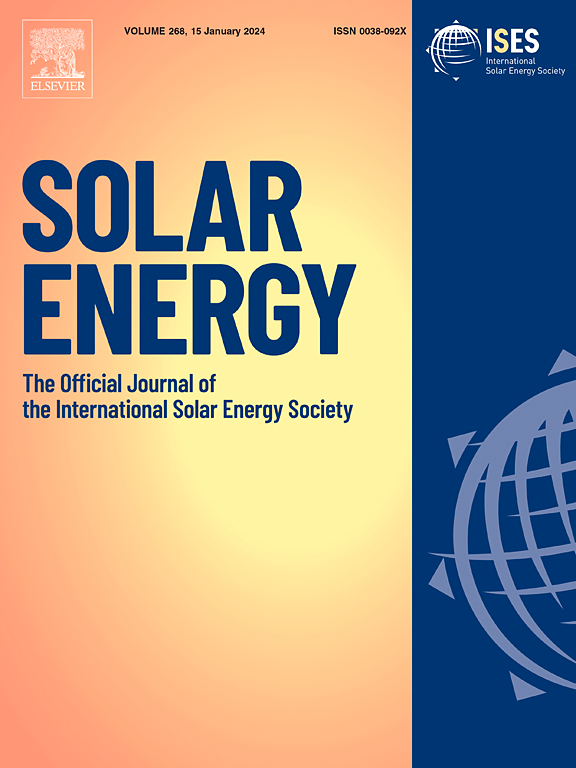Ultrathin perovskite solar cell based on Gires-Tournois resonator configuration with 27% theoretical efficiency
IF 6
2区 工程技术
Q2 ENERGY & FUELS
引用次数: 0
Abstract
Ultrathin photovoltaic devices hold significant potential for the efficient conversion of solar energy to electricity, offering the advantages of reduced material consumption and deposition time. The key challenge is to achieve high light absorption in ultra-thin layers while minimizing photocurrent losses. In this study, we introduce a strategy centered on super absorption in planar active layers. We have engineered an ultrathin perovskite solar cell featuring a 45-nm-thick absorption layer that exhibits an average absorptivity of 85 % within the visible light and a theoretical efficiency up to ∼ 27 % under certain conditions. This design employs a straightforward silver-backed mirror to enact an effective light-capture technique based on current perovskite solar cell configurations. The observed boost in visible light absorption is attributable to the potent super absorption of the Gires-Tournois resonator configuration. We further analyzed the impact of the built-in electric field on the recombination rate, noting that the enhancement in efficiency is attributed to the effective extraction of charge carriers. The effects of operating temperature and parasitic resistance on the performance of the device are evaluated. This assessment helps to understand how these factors influence efficiency and stability, providing insights for optimizing device design in practical settings.
基于 Gires-Tournois 谐振器配置的超薄过氧化物太阳能电池理论效率达 27
超薄光伏设备具有减少材料消耗和沉积时间的优势,在将太阳能高效转化为电能方面潜力巨大。关键的挑战在于如何在超薄层中实现高光吸收率,同时将光电流损耗降至最低。在本研究中,我们介绍了一种以平面活性层的超强吸收为核心的策略。我们设计了一种超薄过氧化物太阳能电池,其吸收层厚度为 45 纳米,在可见光范围内的平均吸收率为 85%,在特定条件下的理论效率高达 ∼ 27%。这种设计采用了一种直接的银底反射镜,在目前的过氧化物太阳能电池配置基础上开发出一种有效的光捕获技术。所观察到的可见光吸收率的提高归功于 Gires-Tournois 谐振器配置的强大超吸收能力。我们进一步分析了内置电场对重组率的影响,注意到效率的提高归因于电荷载流子的有效提取。我们还评估了工作温度和寄生电阻对器件性能的影响。这项评估有助于了解这些因素如何影响效率和稳定性,从而为在实际环境中优化器件设计提供启示。
本文章由计算机程序翻译,如有差异,请以英文原文为准。
求助全文
约1分钟内获得全文
求助全文
来源期刊

Solar Energy
工程技术-能源与燃料
CiteScore
13.90
自引率
9.00%
发文量
0
审稿时长
47 days
期刊介绍:
Solar Energy welcomes manuscripts presenting information not previously published in journals on any aspect of solar energy research, development, application, measurement or policy. The term "solar energy" in this context includes the indirect uses such as wind energy and biomass
 求助内容:
求助内容: 应助结果提醒方式:
应助结果提醒方式:


